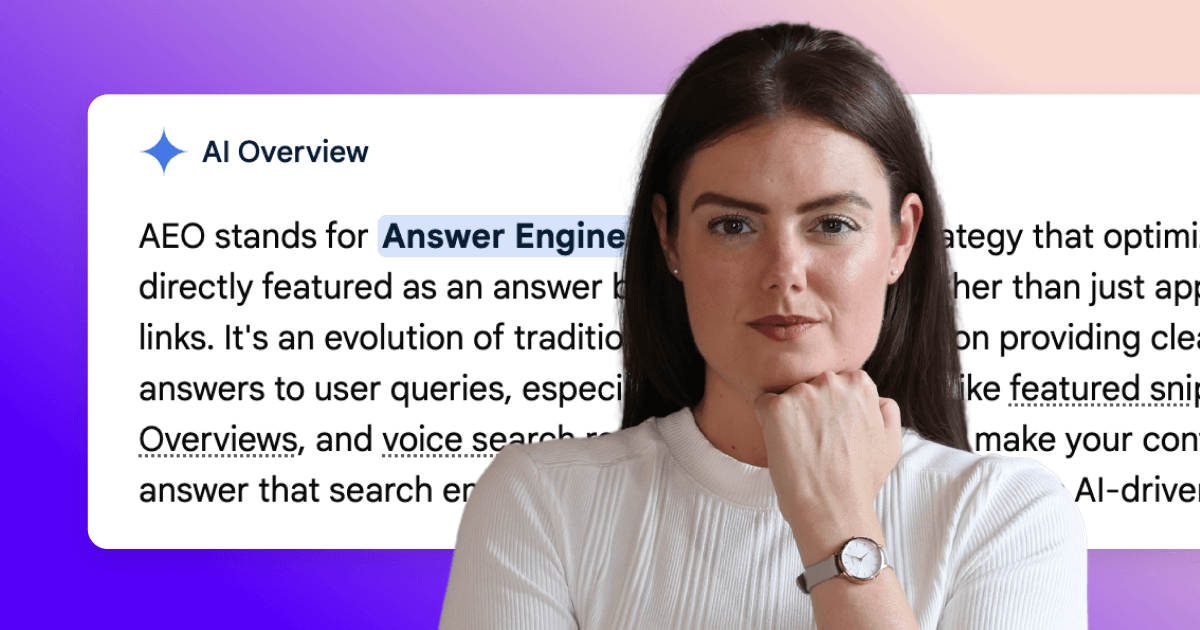
Bounce rate. Just one of thousands of KPIs we can track as marketers. But why is this little guy particularly important? And what impact can this have on your SEO?
What is bounce rate?
In Google's own words: a bounce is a single-page session on your site. In Analytics, a bounce is calculated specifically as a session that triggers only a single request to the Analytics server, such as when a user opens a single page on your site and then exits without triggering any other requests to the Analytics server during that session.
In other words, bounce rate is the percentage of people that land on one specific page of your website (from a search engine, social link or other) and leave without exploring any subsequent pages of your website. The more visitors that land and leave, the higher your bounce rate.
This might be because they didn't find the information they were looking for. Or maybe because they arrived by mistake and your site wasn't relevant to them at all. However, that's not always the case - we'll explore where high bounce rates aren't always negative, later.
Does bounce rate affect SEO?
Bounce rate is an important factor in Google's ranking algorithm. Simply put, the higher your bounce rate, the less favourably Google will view your site.
A high bounce rate tells Google that the information on your webpage isn't engaging enough or isn't satisfying the intent of your visitor's search. Therefore, given Google's commitment to serving high-quality websites to Internet browsers, why would it present yours at the top?
Not only can a high bounce rate affect your Google rankings, it can also lose potential conversions and therefore revenue. Not technically an SEO impact but important nonetheless!
Your number one goal should be to convert those one-time visitors into customers. But, you can’t achieve this goal if visitors aren’t sticking around...
How can I monitor bounce rate?
You can check out your website’s bounce rate by jumping into Google Analytics and clicking under ‘Audience’ then ‘Overview’:

Here, you’ll find an average of your website’s overall bounce rate, but you can also explore individual pages to find the percentage of visitors who landed on a specific page and left without exploring.
You can even compare bounce rates by devices. This can be super-helpful when optimising for mobile vs desktop as it can offer an insight into which elements may need to be tweaked in their responsive states.
Google Analytics, being the powerful tool it is, doesn’t just tell you the bounce rates of your website pages, it also provides hundreds of other metrics, such as:
- How many visitors your site has received
- The average pages per visit
- Time on site
It is important to look at these in conjunction with each other, as a high bounce rate isn't always a cause for alarm. For example, if you notice that your bounce rate is high but the average time on site is also high, this could mean that people have succeeded in achieving their goals without the need to navigate further.
An example would be an informative page that answers a specific question. It might also contain a contact method. Your prospects might land, become informed, and possibly call your number. Although the bounce rate is high, the page is successful.
The problem is when bounce rate is high and there is little engagement from your visitors. High bounce rate and low conversion is a cause for concern.
What should my bounce rate be?
The rather large window of 25-70% isn't the most helpful when it comes to average bounce rate, but it is tricky to define as it varies from industry to industry.
As a rule of thumb:
- 26-40% is excellent
- 41-55% is good
- 56-70% is higher than average
Over 70% is generally disappointing for everything outside of blogs and news. These categories (blogs and news) are slight anomalies in that we expect a high bounce rate due to their finite informative nature. They tend to exist to satisfy an appetite for knowledge (one search or one question) so a high bounce rate in this case may actually mean that the page has satisfied the visitor's need.
Your website bounce rate will depend on a number of factors:
1. Type of traffic
Are visitors looking specifically for your company or are they looking for information? People who want to find you will bounce less than those who are just browsing for information and your website pops up.
2. Traffic source
Visitors from Google tend to bounce much less than visitors from social media sites. Google serves intent-driven searches whereas social media may have caught a visitor off-guard when they're not particularly interested in your offer.
3. The page landed on
For example, blogs tend to have higher bounce rates than a product or service page. If people are coming straight to your homepage, they should not be bouncing off - your homepage should encourage them to explore further.
4. Design and layout
Websites that are difficult to navigate, confusing, clunky or have an out-dated look and feel all tend to have higher bounce rates than fresh, clean, easy-to-use, mobile-friendly websites.
5. Content
If people can’t immediately find what you do and who you do it for, they’ll leave. The importance of content is often overlooked and is one of the most underrated causes of high bounce rates.
6. Speed and usability
Visitors are impatient! Slow-loading websites have high bounce rates and low conversion rates because people can't be bother to hang around!
Why is my bounce rate high?
A number of factors can contribute to a high bounce rate.
Poor content
People generally land on websites to learn more about a particular subject, so of your content doesn’t address their needs, they’re not going to stick around.
Knowing your audience is crucial - what are they looking for and how can you help them? Hit their pain points right and they'll be putty in your hands.
Develop engaging content that effectively answers your visitors’ questions, proving them with all the information they need to become happy, loyal customers.
Poor user experience
Visitors to your site make a first impression of your organisation in just 0.05 seconds! So when it comes to user experience, you don't have long to get it right.
This means having a simple but aesthetically-pleasing design, a simple layout, a navigation menu that is easy to understand and content that is just enough to entice visitors to convert.
Technical error
If your bounce rates are uncommonly high, there may be a technical error stopping visitors from accessing the page. Perhaps a plugin has gone down (if you have a WordPress site) or maybe your site’s JavaScript malfunctioned.
These errors might remain on your site without you knowing about them. The best way to detect these is to go through your site as a visitor and fix any issues you hit immediately.
Speed issues
Your website should load in 2.5 seconds or less. Use a platform like GTMetrics to get a report on your website’s speed. If your site is loading too slowly, the platform will give you tips on how to fix it.
Google’s Search Console can also give you speed insights and advice on making your site superfast.
How can I reduce my website's bounce rate?
So, you may have detected WHY you have a high bounce rate, but what about the ultimate goal of reducing it?
There are a number of ways to do this. First and foremost, good website design. Design contributes to user experience and where there is a good user experience we see people staying for longer. After all, you wouldn't stay at a party if you weren't having a great time - it's no different for a website experience!
Aside from design, follow these 5 top tips to reduce bounce rate...
1. Put the most important content above the fold
When viewing a website, it takes just 0.05 seconds to form a first impression! Make sure visitors know who you are and what you do in the blink of an eye. If visitors can’t figure this out quickly and easily, they’ll bounce straight off your site and onto a competitor’s!
Most of the time, your website’s homepage is the most widely visited page on your site. It’s often the page that visitors land on first and it’s also the one they most often bounce from. Your homepage should be designed to guide users off to other pages of your site.
Make sure that the above-the-fold area contains your value proposition and main Call-to-Action as 48% of page viewing time is spent in this area alone! Also use this space to guide people in the right direction. Here’s how you can do that:
- Clear headline to describe what you do and who you do it for
- Cleverly crafted content
- Categories (especially for ecommerce sites) to push visitors into a funnel
2. Optimise speed and accessibility
Your site should be compatible with a variety of browsers such as Google Chrome, Safari, Firefox and Internet Explorer, etc. and should work on all devices. Not only should your website be built with responsive design (anyone trying to up-sell their services by offering ‘responsive design’ is about 10 years out of date!) it should also load quickly across all browsers and devices.
Google's benchmark for page speed is 2 seconds and research shows that every second longer adds roughly 5% to a website's bounce rate:

It comes as no surprise that how long a web page takes to load directly impacts the number of visitors willing to wait.
It's worth noting, however, that although the 2-second benchmark is a great goal to strive for, it’s not always possible, especially now that video content is becoming more and more desirable and there is just no escaping the fact that video takes longer to load. Having a longer load time does not guarantee a high bounce rate, it's just one of the contributing factors.
3. Use interactive elements
Gone are the days of static websites. Animation and video have levelled up website experiences drastically, but there's still room for improvement.
Humans love interaction so why not bring this into your website?
Create engaging forms with logic jumps or gamify aspects of your qualification process. This opens up the opportunity to push visitors to a dedicated page following their seemingly 'personalised' interaction.
Check out Property Hub’s old homepage hero - visitors were immediately engaged with a short quiz; 3 simple questions gauge the visitor's property goals, then direct them to the most relevant page of the website.
This is a sterling tactic to reduce bounce rate as users immediately hit a second page of their website. Notice also how this was all above the fold so the quiz could be taken on fit hit:

4. Use an exit intent popup
This strategy allows you to detect when your visitor intends to leave your site, equipping you with one last chance to hit them with a targeted campaign to stay engaged (and ultimately reduce your bounce rate).
With an exit-intent pop-up, you could direct users to recommended blog posts, special offer landing pages or your newsletter sign up page, to give just a few suggestions.
Exit intent popups are highly effective because they’re attention-grabbing without disturbing your visitors.
They’re also a fantastic opportunity to give stuff away for free. That’s right. Give away your hard work free of charge. Offering a free downloadable document means you can navigate visitors away to a secondary page where they can access their download or see a "Thank You" message. Just like that, they’ve moved further than the first page they landed on and, as if by magic, you’ve reduced your bounce rate!
As well as that, by giving stuff away for free, you can make long-term relationships. Ask people for their email in exchange for the freebie and you’ve got a lifetime (or until they unsubscribe from your mailing list) to reach back out to them and up-sell a product/service you offer.
A win-win situation; a reduction in bounce rate AND a growing email list for marketing and retargeting purposes.

What’s more, when we get things for free, we get a sense of accomplishment and pride, even though we haven’t really done anything to earn it. We also disproportionately add value to the freebie - people are more likely to be pleased by something that you may deem ‘average’ just because it’s free. This means you’re more likely to stick in the minds of your website visitors because every time they refer to your super-helpful guide, your name pops up. It’s a great seed to plant.
You can give away anything for free; an eBook, a checklist, a toolkit, a guide or a course, to give just a few suggestions. It might even be as simple as a free pdf version of your article, or an exclusive extended version with ‘extra tips’.
We give away a variety of free resources to help visitors audit their own website, discover how they can make improvements themselves and drive their own online growth.
Once your visitors have got what they wanted, they’re more likely to leave your site. For example, after they’ve made a purchase or downloaded a guide. A great way to get these users to stay on your site for longer is to redirect them to relevant, useful content on your site.
If you’re an e-commerce business, you can also up-sell related products in your “Thank You” page. Not only does this practice make them more engaged, if done right, you can increase the revenue per customer as well. For example, if a website visitor has made a purchase, why not redirect them to a sales page or relevant product page after their check-out experience?
If they’ve downloaded a helpful guide, why not redirect them to your service page where they might just be enticed to use you instead of your DIY toolkit?
5. Evaluate and optimise inbound marketing strategies
If the webpage experiencing a high bounce rate is discovered via organic search, use Google Search Console to identify the search terms bringing users to your site. You can do this by navigating to the 'Performance' tab in the side panel and exploring 'Pages' and 'Queries'.
Here, you'll be able to see the search terms that specific pages have organically ranked for and brought visitors to your website:

If the terms don't correlate with your webpage's content, you'll need to make some changes so that visitors are greeted with relevant information and don't bounce straight off.
Alternatively, you could use a tool like Semrush to dig even deeper into your organic traffic insights.
We love Semrush because it gives so much more than what's in the screenshot below. There are a few tools that give insights like this - we've compared Semrush and Ubersuggest here, so take a look and see what's right for you.

If you're running a paid ad via Google or a social media platform such as Facebook, you should make sure the ad content is relevant to the page it is linked to and monitor user behaviour post-ad-click.
Top Tip: You should most definitely NOT be linking an ad to your homepage as your homepage content will be far too general. A paid ad should lead to its own dedicated landing page that is optimised for conversion.
Similarly, if users land on your site via a display ad and are bouncing, make sure these ads are relevant to your site content. Also check that your retargeting campaign is optimised.
So, how can you decrease your website's bounce rate?
By implementing all of the above, you'll be on a pretty great path to seeing a reduction in your bounce rate and an overall improvement in your website's performance.
But remember, bounce rate is just one of many factors in Google's ranking algorithm.

Just a heads up, some of the links in this article may be affiliate links, meaning we may make a small commission on any sign-ups or purchases for the tools we recommend.






































